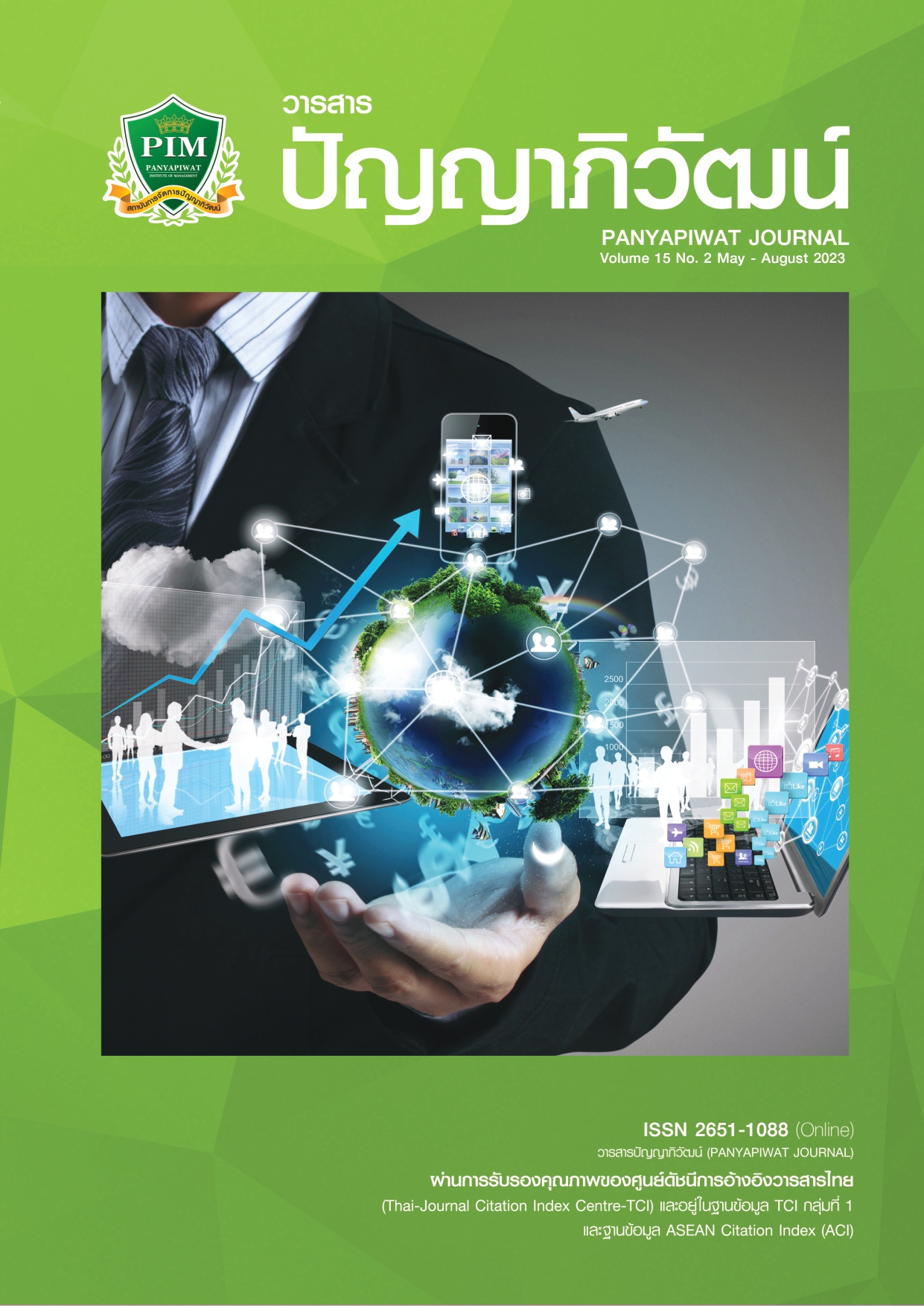องค์ประกอบและดัชนีลำดับความสำคัญของความต้องการจำเป็นของการบริหารวิชาการแบบร่วมมือสู่เป้าหมายของสะเต็มศึกษาของโรงเรียนเครือข่ายสะเต็มศึกษาที่เปิดสอนระดับชั้นประถมศึกษา
Main Article Content
บทคัดย่อ
Article Details

อนุญาตภายใต้เงื่อนไข Creative Commons Attribution-NonCommercial-NoDerivatives 4.0 International License.
“ข้าพเจ้าและผู้เขียนร่วม (ถ้ามี) ขอรับรองว่า บทความที่เสนอมานี้ยังไม่เคยได้รับการตีพิมพ์และไม่ได้อยู่ระหว่างกระบวนการพิจารณาลงตีพิมพ์ในวารสารหรือแหล่งเผยแพร่อื่นใด ข้าพเจ้าและผู้เขียนร่วมยอมรับหลักเกณฑ์การพิจารณาต้นฉบับ ทั้งยินยอมให้กองบรรณาธิการมีสิทธิ์พิจารณาและตรวจแก้ต้นฉบับได้ตามที่เห็นสมควร พร้อมนี้ขอมอบลิขสิทธิ์บทความที่ได้รับการตีพิมพ์ให้แก่สถาบันการจัดการปัญญาภิวัฒน์หากมีการฟ้องร้องเรื่องการละเมิดลิขสิทธิ์เกี่ยวกับภาพ กราฟ ข้อความส่วนใดส่วนหนึ่งและ/หรือข้อคิดเห็นที่ปรากฏในบทความข้าพเจ้าและผู้เขียนร่วมยินยอมรับผิดชอบแต่เพียงฝ่ายเดียว”
เอกสารอ้างอิง
American Evaluation Association. (2021, December 29). Guiding principles for evaluators. https://www.eval.org/Portals/0/Docs/AEA_289398-18_GuidingPrinciples_Brochure_2.pdf
Asawapoom, A. (2008). Modern education management: Concepts, theory, and practice. Ubonkit Offset Press. [in Thai]
Boonpirom, S. (2010). Academic management. Book Point. [in Thai]
Brackett, A., & Hurley, N. (2004). Collaborative evaluation led by local educators. Wested.
Cousins, J. B., Donohue, J. J., & Bloom, G. A. (1996). Collaborative evaluation in North America: Evaluators’ self-reported opinions, practices, and consequences. Evaluation Practice, 17(3), 207-226.
Cousins, J., Whitmore, E., Shulha, L., Al Hudib, H., & Gilbert, N. (2015). Principles to guide collaborative approaches to evaluation. Can Evaluation Society.
Fetterman, D. M., & Wandersman, A. (2005). Empowerment evaluation principles in practice. Guilford Press.
Hong, O. (2017). STEAM education in Korea: Current policies and future directions. Science and Technology Trends Policy Trajectories and Initiatives in STEM Education, 8(2), 92-102.
Intarak, C. (2004). Academic management. Prince of Songkla University, Pattani Campus. [in Thai]
Khwana, T., & Khwana, K. (2019). Stem education for learning management to work skills in the 21st century. Sakon Nakhon Graduate Studies Journal, 16(73), 1-12. [in Thai]
Kijkuakul, S. (2015). STEM education. Journal of Education Naresuan University, 17(2), 201-207. [in Thai]
Klomim, K. (2019). STEM education curriculum development. Phitsanulokdotcom Press. [in Thai]
Krejcie, R. V., & Morgan, D. W. (1970). Determining sample size for research activities. Educational and Psychological Measurement, 30(3), 607-610.
LaForce, M., Noble, E., King, H., Century, J., Blackwell, C., Holt, S., Ibrahim, A., & Loo, S. (2016).
The eight essential elements of inclusive STEM high schools. International Journal of STEM Education, 3(1), 1-11.
Lewkowicz, J. A., & Nunan, D. (1999). The limits of collaborative evaluation. Tesol Quarterly, 33(4), 681-700.
Ministry of Education. (2003). National education act B.E. 2542, and its amended (No. 2), B.E. 2545. Aksornthai. [in Thai]
National Research Council. (2011). Successful K-12 STEM education: Identifying effective approaches in science, technology, engineering, and mathematics. National Academies Press.
National Science Foundation. (2010). Preparing the next generation of STEM innovators: Identifying and developing our nation’s human capital. National Science Foundation.
Office of the Education Council. (2016). Policy proposals for promoting STEM education in Thailand. Prigwhan Graphic Co., Ltd. [in Thai]
O’Sullivan, R. G. (2004). Practicing evaluation: A collaborative approach. Sage.
O’Sullivan, R. G. (2012). Collaborative evaluation within a framework of stakeholder-oriented evaluation approaches. Evaluation and Program Planning, 35(4), 518-522.
O’Sullivan, R. G., & O’Sullivan, J. M. (1998). Evaluation voices: Promoting evaluation from within programs through collaboration. Evaluation and Program Planning, 21(1), 21-29.
Patton, M. Q. (1986). Utilization-focused evaluation. Sage.
Pooprasert, K. (2001). Academic administration in educational institutions. Tips Publication. [in Thai]
Rodríguez-Campos, L. (2012). Advances in collaborative evaluation. Evaluation and Program Planning, 35(4), 523-528.
The Institute for the Promotion of Teaching Science and Technology. (2014). Know STEM. http://www.stemedthailand.org/?page_id=23 [in Thai]
The Institute for the Promotion of Teaching Science and Technology. (2015). STEM education standards. Success Publication. [in Thai]
Visetsiri, P. (2012). Teaching documents 2747732 academic administration and educational quality assurance. Chulalongkorn University. [in Thai]
Wonganutroj, P. (2000). Academic management. Soontornflm. [in Thai]


